FAQ Page
Frequently Asked Questions
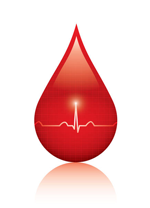 One part of getting ready for heart surgery is to know about the heart in general & surgery in particular. There are two types of heart surgeries
One part of getting ready for heart surgery is to know about the heart in general & surgery in particular. There are two types of heart surgeries
Open Heart Surgery: When a heart lung machine is used for surgery it is called open-heart surgery. This is used for valve repair or replacement. Certain birth defects and certain coronary artery bypass surgeries. This heart lung machine takes over the function of heart and lungs which are stopped, thus enabling the surgeon to perform the surgical procedure in a precise and accurate fashion on a motionless & bloodless heart.
Closed Heart Surgery: When the heart lung machine is not required for the surgery, it is called closed heart surgery, such as closed mitral valvotomy, PDA closure, bypass surgery on beating heart etc. Here the heart keeps beating and supports the body circulation totally on its own.
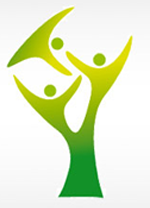 The heart organ is a marvel of nature. It is a hollow, muscular organ about the size of your fist. It lies in the center of the chest, slightly to the left. It beats almost one lakh times a day, day after day, year after year. It is made of a unique muscle called myocardium, which is the main propelling force of the heart. It pumps blood in the body with each beat of the heart. This happens 60-90 times a minute. It's obvious that for the proper functioning of the heart, the myocardium muscle has to be healthy. Myocardium gets its nutrition and oxygen through blood, which is supplied by coronary arteries.
The heart is divided into two parts, the right heart and the left heart. Right heart has two chambers, right atrium and right ventricle. Similarly the left side heart has two chambers - Left atrium & left ventricle. So in all there are four chambers in the heart. The right side of the heart receives impure blood from the body and pumps it into the lungs. Blood gets purified in the lungs and returns back to the left side of the heart. From here it is ~ pumped back to the entire body for -- supply of oxygen & nutrition. Four -- valves, two on the left side of the heart (mitral and aortic) and two on the right side of ,tJeart (pulmonary and tricuspid) act as one-way doors to direct the blood flow.
The heart organ is a marvel of nature. It is a hollow, muscular organ about the size of your fist. It lies in the center of the chest, slightly to the left. It beats almost one lakh times a day, day after day, year after year. It is made of a unique muscle called myocardium, which is the main propelling force of the heart. It pumps blood in the body with each beat of the heart. This happens 60-90 times a minute. It's obvious that for the proper functioning of the heart, the myocardium muscle has to be healthy. Myocardium gets its nutrition and oxygen through blood, which is supplied by coronary arteries.
The heart is divided into two parts, the right heart and the left heart. Right heart has two chambers, right atrium and right ventricle. Similarly the left side heart has two chambers - Left atrium & left ventricle. So in all there are four chambers in the heart. The right side of the heart receives impure blood from the body and pumps it into the lungs. Blood gets purified in the lungs and returns back to the left side of the heart. From here it is ~ pumped back to the entire body for -- supply of oxygen & nutrition. Four -- valves, two on the left side of the heart (mitral and aortic) and two on the right side of ,tJeart (pulmonary and tricuspid) act as one-way doors to direct the blood flow.
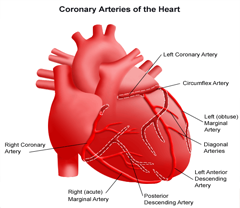 The heart muscle (myocardium) is fed by the coronary arteries, which begin at the aorta. These arteries bring oxygen and nutrients to the heart muscle. Three main coronary arteries lie on the surface of the heart. They divide into smaller branches so that each part of the heart muscle receives nutrients. The left coronary artery starts with a short part called the left main. The left main divides into left anterior descending branch (LAD) and the circumflex branch (LCx). The left anterior descending branch feeds the left side and front of the heart, and the circumflex takes blood to the back of heart on the left side. The right coronary artery (RCA) feeds the right side of the heart and has branches, which extend to the back.
What is Coronary Artery Disease? Coronary artery disease affects the blood vessels (arteries) of the heart. These arteries bring blood (with oxygen and nutrients) to the heart muscle. Ageing and other complex factors cause these soft and compliant blood vessels to harden. Fat, cholesterol and minerals from the blood are deposited on the inner surface of the coronary arteries. , When these materials build up, they form what's called a 'plaque'. A plaque may restrict the blood flow through the coronary artery. Rough surfaces on the plaque may stimulate the formation of a blood clot, which may build up slowly and narrow the artery even more producing worsening but stable angina. However a blood clot may build up quickly and abruptly and close the artery thereby producing unstable angina or even a heart attack (myocardial infarction).
The heart muscle (myocardium) is fed by the coronary arteries, which begin at the aorta. These arteries bring oxygen and nutrients to the heart muscle. Three main coronary arteries lie on the surface of the heart. They divide into smaller branches so that each part of the heart muscle receives nutrients. The left coronary artery starts with a short part called the left main. The left main divides into left anterior descending branch (LAD) and the circumflex branch (LCx). The left anterior descending branch feeds the left side and front of the heart, and the circumflex takes blood to the back of heart on the left side. The right coronary artery (RCA) feeds the right side of the heart and has branches, which extend to the back.
What is Coronary Artery Disease? Coronary artery disease affects the blood vessels (arteries) of the heart. These arteries bring blood (with oxygen and nutrients) to the heart muscle. Ageing and other complex factors cause these soft and compliant blood vessels to harden. Fat, cholesterol and minerals from the blood are deposited on the inner surface of the coronary arteries. , When these materials build up, they form what's called a 'plaque'. A plaque may restrict the blood flow through the coronary artery. Rough surfaces on the plaque may stimulate the formation of a blood clot, which may build up slowly and narrow the artery even more producing worsening but stable angina. However a blood clot may build up quickly and abruptly and close the artery thereby producing unstable angina or even a heart attack (myocardial infarction).
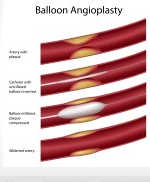 Plaques that block the coronary arteries usually occur in localized portions of the arteries. When the disease is localized in one or two arteries, the blockage can sometimes be opened by stretching or dilating. This is done using a small balloon. This procedure is called PTCA (angioplasty or ballooning). When the blockages are more complicated and involve more coronary arteries, coronary artery bypass surgery is usually recommended. Such an operation will establish new pathways to carry the blood around the blockages
Plaques that block the coronary arteries usually occur in localized portions of the arteries. When the disease is localized in one or two arteries, the blockage can sometimes be opened by stretching or dilating. This is done using a small balloon. This procedure is called PTCA (angioplasty or ballooning). When the blockages are more complicated and involve more coronary arteries, coronary artery bypass surgery is usually recommended. Such an operation will establish new pathways to carry the blood around the blockages
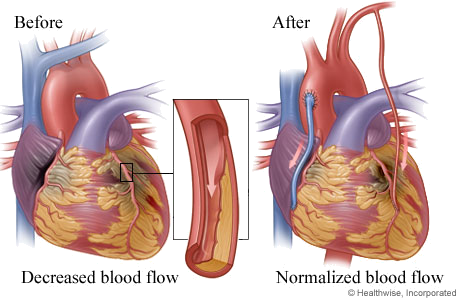 CABG surgery may be an open or closed heart operation in which arteries or veins are taken from another part of the body to channel needed blood flow to the coronary arteries. The arteries or veins used in the operation are expendable; removing them does not significantly affect the blood circulation of the part they are taken from.
CABG surgery may be an open or closed heart operation in which arteries or veins are taken from another part of the body to channel needed blood flow to the coronary arteries. The arteries or veins used in the operation are expendable; removing them does not significantly affect the blood circulation of the part they are taken from.
CABG surgery may be an open or closed heart operation in which arteries or veins are taken from another part of the body to channel needed blood flow to the coronary arteries. The arteries or veins used in the operation are expendable; removing them does not significantly affect the blood circulation of the part they are taken from.
CABG surgery may be an open or closed heart operation in which arteries or veins are taken from another part of the body to channel needed blood flow to the coronary arteries. The arteries or veins used in the operation are expendable; removing them does not significantly affect the blood circulation of the part they are taken from.
Typically, the arteries used are on the inside of the chest along the side of the breast bone (Internal mammary artery), on the inner aspect of / forearm (Radial artery) and along the stomach (Right Gastro-Epiploic artery). The vein that is typically used comes from just beneath the skin on the inside of the leg & thigh (saphenous vein). Some times vein may be removed from the back cf legs or arms.
During surgery one end of these arteries or veins are connected directly to the coronary arteries on the surface of the heart beyond the blockages and the opposite end is attached to the main artery of the body called "Aorta". This way blood can flow through them to bypass the narrowed or closed points.
Coronary artery bypass operations are performed either by using a heart lung machine or on beatinqheart. In the former technique this machine makes it possible to stop the beating (the motion) of the heart as it maintains the blood flow & circulation through the body. Then the grafts can be precisely connected to the tiny coronary arteries. In the latter technique, heartbeat is not stopped and the heart-lung machine is not used. Instead an external stabilizer system is used to reduce the mobility of heart in the area we are operating. The technique to be used in your case will be decided by your surgeon
o have high blood pressure or diabetes
o have high cholesterol
o smoke
o weigh too much
o exercise less than 3 times a week
o eat high fat, high cholesterol food each day
o have family members who have had a stroke or heart attack before
the age of 55 years
o are a man over 45 years of age
o are a woman in the post menopausal age
o are often tense, stressed or pressed for time
o get angry quickly
High blood pressure is sneaky. You can have it and not know it. While it damages the arterial walls, letting fat and cholesterol build-up more easily, you may not feel a thing. Over time, much damage is done causing strokes, heart attacks or kidney failure. Blood pressure can be fairly easy to control. You can bring it down with weight loss, exercises, medications, relaxation and not smoking. Some people are also asked to eat less salt
If you have diabetes, do everything you can to control blood sugar. Diabetes puts a person at very high risk for the build up of fat and cholesterol in the arteries, of not only heart, but of virtually every organ of the body.
o Narrows blood vessels
o Can cause coronary artery spasm Scars the lung and reduces oxygen exchange o Increases heart rate
o Shortens life span
o Lowers good cholesterol
It may take more than one try to quit smoking. So don't give up. Each try improves your chances of quitting for good.
o more cholesterol in the blood
o higher blood pressure
o more shortness of breath
o more diabetes
o more work load on the heart
A steady weight loss program achieved, with low-calorie, low-fat food, and exercise, is the best way to lose weight and keep it off.
o Saturated
o Polyunsaturated
o Monounsaturated
The saturated fats are the worst for you, but all fats should be counted in your food. Your goal is to eat very little fat. Foods high in saturated V fat and cholesterol have been linked to heart disease. Most often these are animal foods like meat and dairy products. Saturated fats can also be found in vegetable oils such as coconut and palm oils. As a rule, plant foods (such as beans, grains, vegetables and fruits) have less fat and cholesterol than animal food. Your aim should be to keep the total cholesterol as low as possible and certainly below 200 mg or less and to consume no more than 20% of your calories as fat.
There are 3 types of exercises:
o Stretching (staying loose)
o Aerobics (for blood flow and oxygen)
o Strengthening (toning or building muscles)
The most important exercise for your heart is aerobic exercise. Walking, jogging, running, swimming, dancing and cycling are aerobic.
Use one of these to stop and slow down:
o Breathing deeply and slowly to get relaxed
o A 10 to 20 minutes rest
o A 30 minutes brisk walk
o Massage, meditation or a visual journey